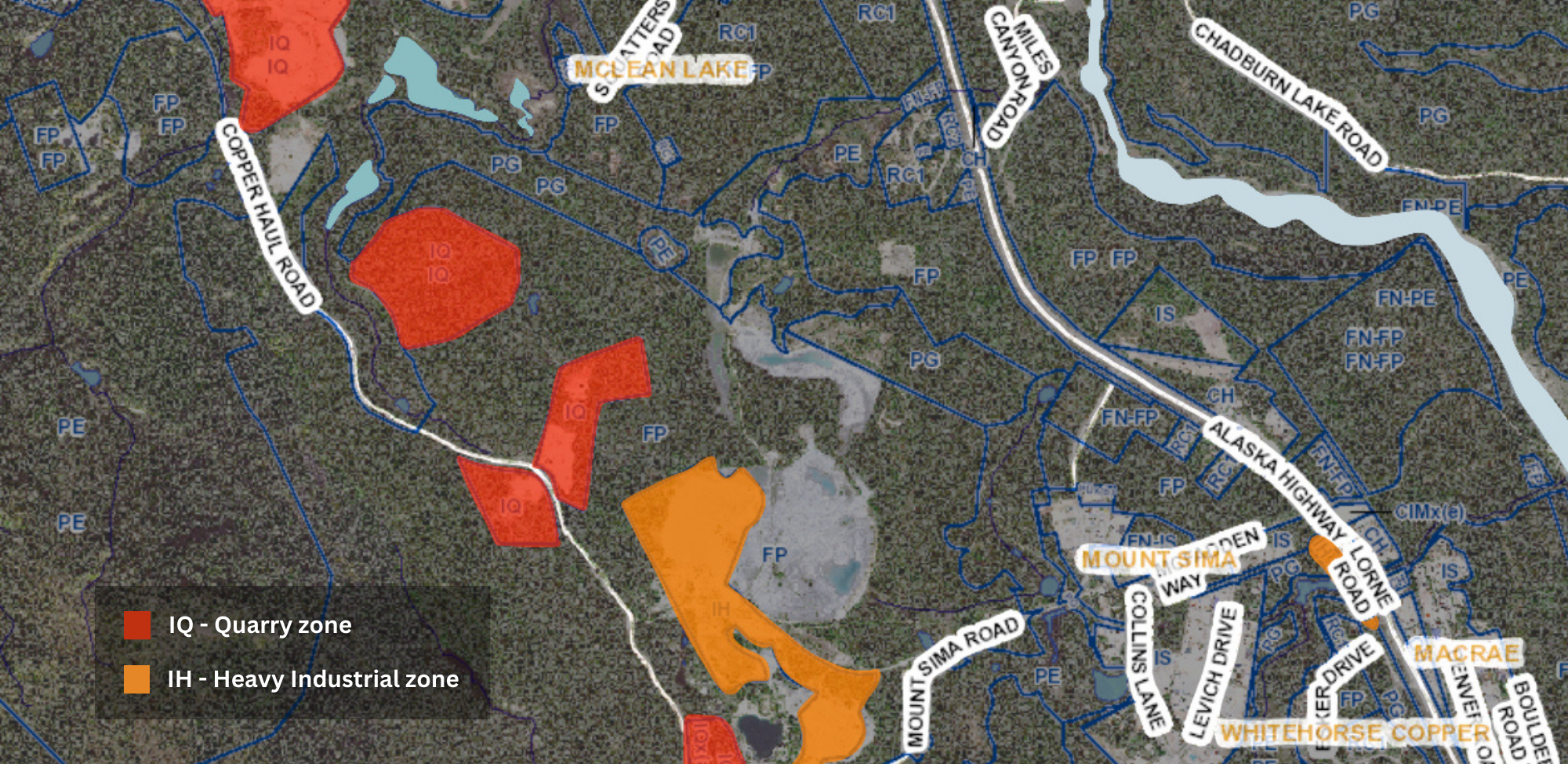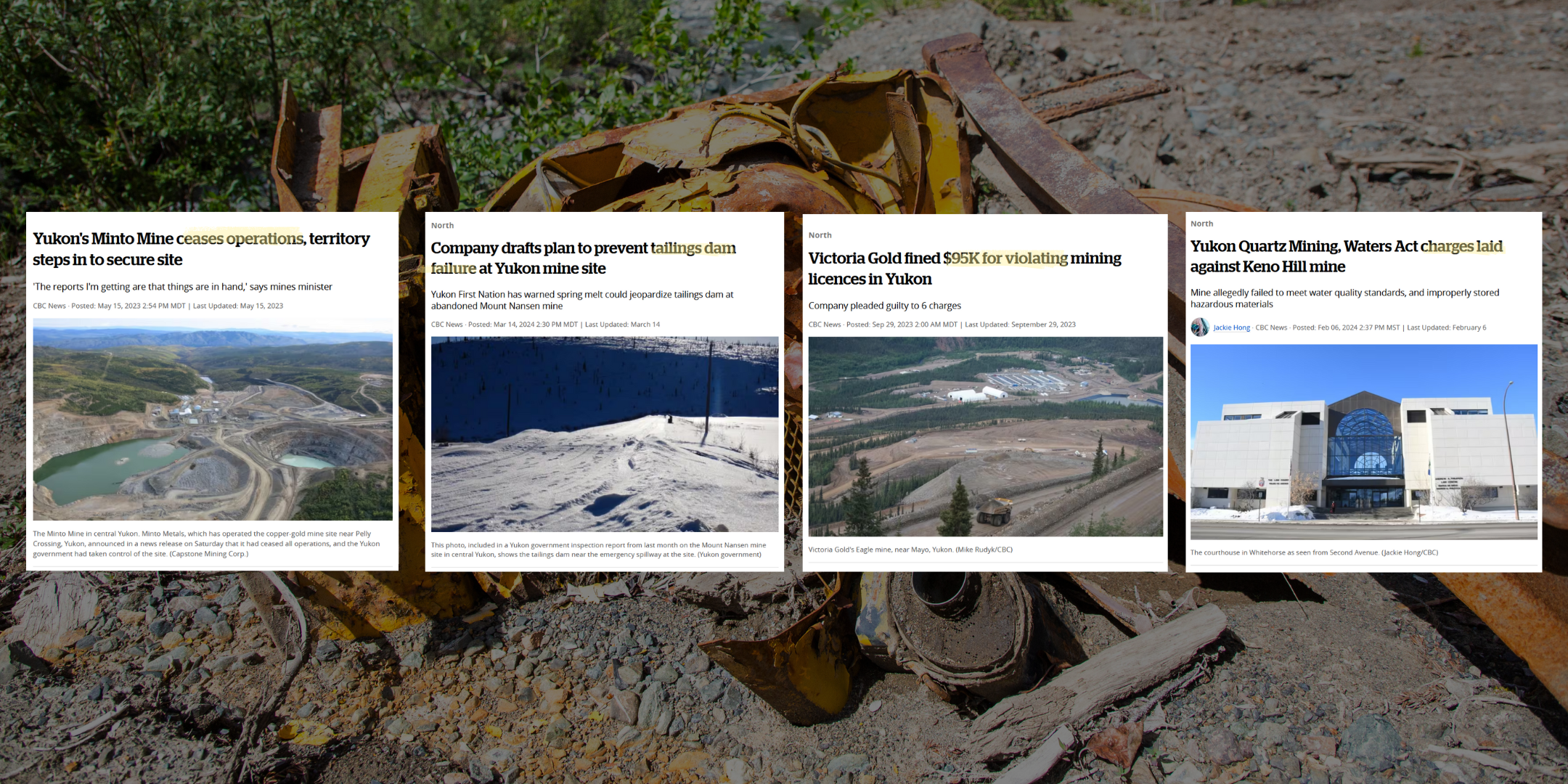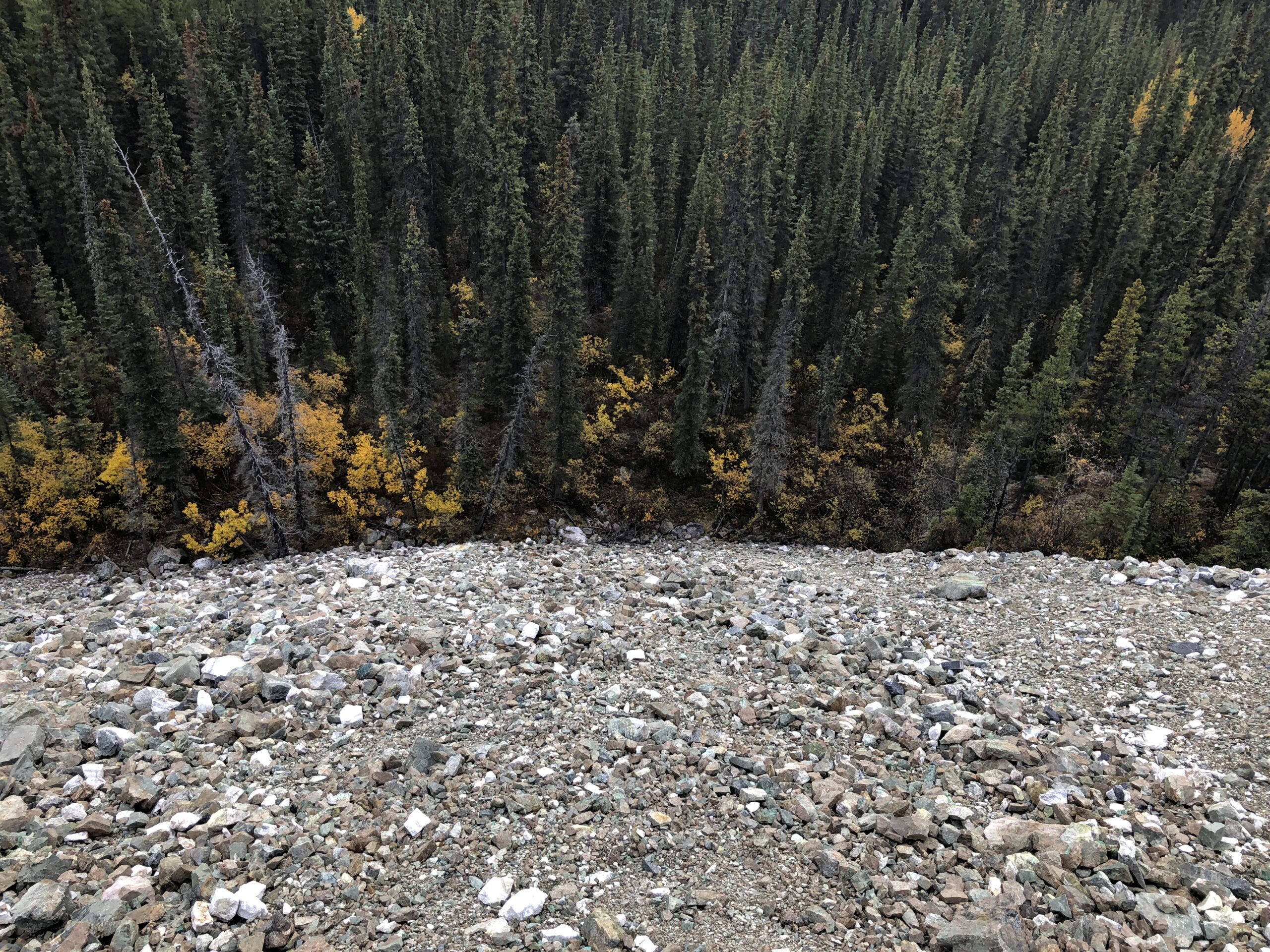Mining in Whitehorse: Speaking out and wading through potential futures
Written by Randi Newton, Conservation Manager | March 27, 2024
Mining is intertwined with Whitehorse’s past, but should it be part of its future? At City Council’s March 11th public hearing on mining in Whitehorse, the large majority of people who spoke said “No.”
I was there to say the same thing on behalf of CPAWS Yukon. All the chairs were filled at City Hall, so I stood near the back wall. As the hearing went on into the evening and more voices echoed the same sentiment, I sat on the floor with tired legs.
The Gladiator Metals copper exploration project, which has claims that run from Cowley Creek through Chasàn Chùa to Crestview, has fueled concerns about the project itself, as well as broader concerns about the potential impacts of future exploration and mining in Whitehorse. This is why the McLean Lake Residents’ Association, with the support of other community associations and organizations, asked City Council to prohibit mineral exploration and mining within city limits.

Former tailings facility for the Whitehorse Copper Mine, which ceased operations in 1982. Decades later, trees and shrubs struggle to grow. Photo by Randi Newton.
Standing with my notes in hand, I reflected on the escalating risks and damages mining brings and how important it is for people to have a strong say in the future of Whitehorse, one where the well-being of residents and housing needs are prioritized. The public hearing was a chance for people to share their views and for Council to consider the options at hand:
1
Keep the status quo
(worst option)
Currently, exploration and mining are prohibited in most of Whitehorse but allowed in areas that are zoned as Quarries and considered on a case-by-case basis in areas zoned as Heavy Industrial.
This is why Gladiator Metals was able to get a development permit to drill in the Mount Sima area without any public input.
2
Decide on a case-by-case basis (slightly better but not sufficient)
Under this option, exploration and mining would no longer be automatically allowed in areas zoned for Quarries but would be considered on a case-by-case basis (this is called a conditional use under the Zoning Bylaw).
As so many people at the public healing explained though, the City needs to go further.
3
Prohibit mining anywhere in Whitehorse (best option)
This is the strongest option that’s legally available to City Council and would make exploration and mining prohibited in Whitehorse under the Official Community Plan and Zoning Bylaw. The one confusing catch is that companies could apply to amend the Official Community Plan and the Zoning Bylaw, so it doesn’t fully take exploration and mining off the table. However, this path would involve much more scrutiny than the other options, and give residents and the municipal government a much stronger say.
CPAWS Yukon and most people who spoke at the public hearing supported the third option, prohibiting mining anywhere in Whitehorse.

Map of the Whitehorse Copperbelt area shows in red where mining is currently allowed (IQ – Quarry zones) and where mining is considered on a case-by-case basis (IH – Industrial heavy zones) in orange. Zoning map from City of Whitehorse’s Planning Theme.
What’s next?
To see all of the heartfelt public presentations, you can watch the hearing here.
City staff are preparing a report on the input received and will present this to City Council in April. Depending on which option is chosen, the City will either have more say in whether mining continues in Whitehorse, or little say at all. Sign up for our newsletter to find out what path we’re heading down…
CPAWS Yukon Presentation to City Council
CPAWS Yukon works across the territory to protect land, water, and wildlife, and the connections people have to those values. We are among the chorus of voices asking the City to amend the Official Community Plan and Zoning Bylaw to prohibit all mining activities in Whitehorse, with the exception of reclamation activities.

We recognize that Class 1 mining activities produce minimal impacts when conducted in already heavily disturbed areas, similar to impacts of other heavy industrial uses that are permitted in the city. Mining exploration as a whole, however, is very different than heavy industrial work. When mining exploration is successful, it ratchets up. What starts off as an “acceptable” activity can escalate into activities with far greater impact and which fall outside of the vision residents and Council have expressed for the City.
CPAWS is concerned with the proposed conditional use approach, as we’re unsure of how much power the City would have to say no to the escalation of a project once it has been approved at the Class 1 level. Specifically, we’re worried the City would not have or not always have the authority to say no to a development permit if a project has been approved through the YESAB process and received a territorial permit, or received a Water Licence. A comprehensive legal analysis demonstrating the City would, indeed, have this ability would satisfy us on this point.
Having absolute certainty that the City can maintain the power of veto is critical, as projects can be approved through the YESAB process but not be in the best interest of a community. One example is the mining activity taking place in Dawson City, despite opposition from the municipal government. As YESAB has itself noted, quote “YESAB assessment does not and cannot address the matter of whether a project proposes an appropriate use of land.” End quote.
Among the places in Whitehorse this could flare up is the South Growth Area, which the OCP identifies as a potential future residential area. From what I could tell by eyeballing maps, part of the South Growth Area is overlain by the IQ zone, where mining is currently permitted, and by mining claims. A prohibition on mining within the City would benefit this area, given that the timelines associated with mining permits could stall the provision of acutely needed housing.
Mining is complex and risky. In the past year alone Minto Mine was abandoned with precariously full tailings ponds, Mount Nansen currently has overfull tailings facilities because of water treatment struggles, Victoria Gold was fined for not meeting water storage requirements and storing more water in its heap leach facility than allowed, and Alexco is facing charges for allegedly failing to meet water quality standards. Prohibiting mining within Whitehorse would allow the City to opt out of the demonstrated risks fully licensed projects are prone to.

Articles from CBC News speak to the risks of licensed mining projects, links can be found in the previous paragraph. Background photo by Malkolm Boothroyd.
As noted in a previous meeting by Mr. Wright, there are also concerns that permitting lower levels of mining exploration activity to take place could increase compensation owed if the City refuses to further permit a project and is found responsible for compensation. My understanding is that court precedent in jurisdictions, like here, without mining expropriation and compensation policies, is to require compensation generally equal to what a company has put into its claims.
This considered, what may appear to be a gift of economic development could become more akin to a high interest loan the public must repay. For clarity, I am not a lawyer and not certain this would happen, but I am concerned it could happen, and am looking for assurance that the City has considered this facet of allowing conditional use, and found it nothing to worry about.
Lastly, even if prohibited under the OCP and zoning bylaws, there is still a path forward for mining within the city, as companies can apply to amend both. While this process is more involved, we believe it elevates the project review to an appropriate standard, as this is an issue people obviously care deeply about. An additional benefit of requiring an amendment is that the City can require a proponent to host a public meeting to provide information. Even for Class 1 activities a public meeting would be a great opportunity for two-way dialogue useful to both the company and the public, and help companies earn their social licence.

Looking down at the forest from a tall waste rock pile near the former Arctic Chief pit. While not visible in this photo, McIntyre Creek runs alongside the pile. This area falls within Chasàn Chùa (McIntyre Creek) but has been excluded from the future park boundaries. Photo by Randi Newton.
Additionally, while we are discussing a broader issue than the Gladiator project, I will note that their project includes many claims in zones where mining activities are currently prohibited. To me, this signals an OCP and zoning bylaw amendment, while more intensive, is something the company has potentially already contemplated, or would be capable of navigating.
For all of these reasons, CPAWS Yukon believes a prohibition is the best way to protect the City’s legacy of healthy lands and clean water for people and wildlife.
